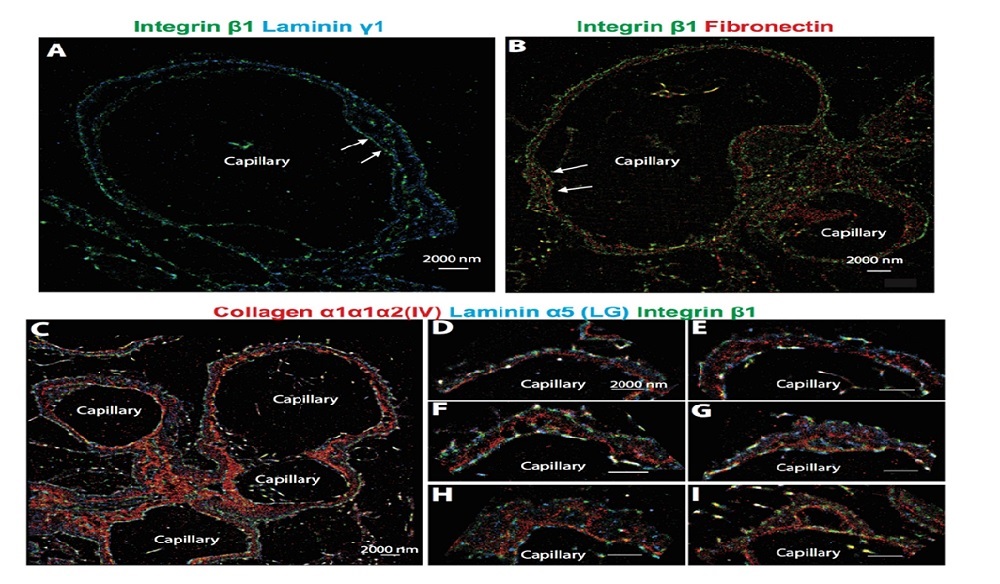Super-resolution Evaluation Of The Glomerular Basement Membrane Changes In The Course Of Transplant Glomerulopathy
Washinton University in St. Louis, St. Louis, MO
Meeting: 2019 American Transplant Congress
Abstract number: 253
Keywords: Kidney transplantation
Session Information
Session Name: Concurrent Session: Biomarkers, Immune Monitoring and Outcomes II
Session Type: Concurrent Session
Date: Monday, June 3, 2019
Session Time: 2:30pm-4:00pm
 Presentation Time: 2:42pm-2:54pm
Presentation Time: 2:42pm-2:54pm
Location: Room 306
*Purpose: Transplant Glomerulopathy (TG) is a histologic entity that affects around 20% of kidney allografts by 5 years post transplantation and results in a significant decrease in kidney allograft survival. TG is mainly characterized by increased thickness or duplication of Glomerular Basement Membrane (GBM). This aberrant thickness is suggested to be associated with endothelial injury and mal-repair cycles, as well as features of podocytes injury. Based on our published molecular reference map of the human GBM, the goal of this study is to evaluate the composition of the thickened GBM associated with TG using super-resolution microscopic techniques
*Methods: Two super-resolution techniques were used for this study: STORM (Stochastic optical reconstruction microscopy) and Airyscan. For STORM, freshly collected kidney biopsies with TG were processed for imaging using Tokuyasu’s method and ultrathin sectioned at 200 nm thickness. For Airyscan, formalin fixed paraffin embedded (FFPE) samples were sectioned at 1-3 microns thick. For Airyscan, different FFPE samples with a confirmed diagnosis of TG were used.
Samples were labeled with antibodies against integrin beta1, Laminin alpha5, Laminin gamma 1, and collagen alpha1/1/2(IV), collagen alpha3/4/5(IV), fibronectin, synaptopodin, myosin IIA, podocalyxin, von Willebrand factor (VWF), FCGR3A/B, FCGR2A, FCGR1B, and FCER1G.
*Results: We established the molecular causes of increased GBM thickness by STORM. While Collagen a3/4/5(IV) did not appear to change much in the thickened GBM areas, staining with collagen a1/1/2(IV) showed clear increases in intensity at the endothelial side of the GBM that correlates with the thickened GBM, and often appeared as finger-like protrusions extending from the endothelial side of the GBM towards the podocyte side. Sometimes collagen a1/1/2(IV) patterns resembled the duplicated GBM patterns seen by electron microscopy.
*Conclusions: The use of super-resolution techniques allowed us to identify molecular changes that constitute the increased GBM thickness in TG. Our data suggest that disease starts from the endothelial side by secretion of extra collagen a1/1/2(IV), which contributes to the increase in GBM thickness. It also suggests that Collagen a1a1a2(IV), when reaching the podocyte side, might send an injury signal to the podocytes that leads to foot process effacement.
To cite this abstract in AMA style:
Hammad D, Miner JH, Alhamad T, Suleiman H. Super-resolution Evaluation Of The Glomerular Basement Membrane Changes In The Course Of Transplant Glomerulopathy [abstract]. Am J Transplant. 2019; 19 (suppl 3). https://atcmeetingabstracts.com/abstract/super-resolution-evaluation-of-the-glomerular-basement-membrane-changes-in-the-course-of-transplant-glomerulopathy/. Accessed December 24, 2025.« Back to 2019 American Transplant Congress

